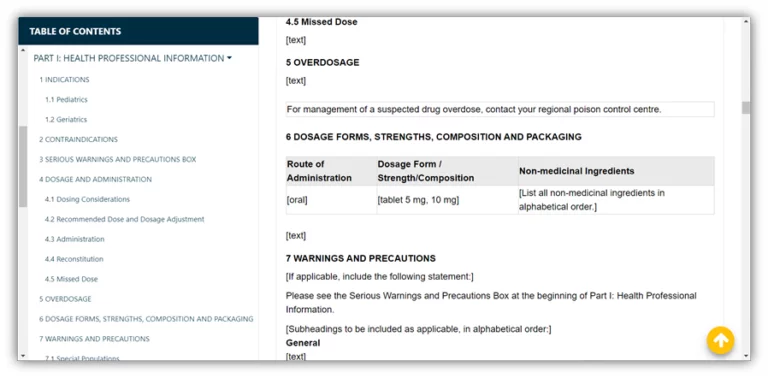In B2B e-commerce, you often have a closer relationship with your customers than in B2C. You tend to have regular contact with your B2B customers, and they are generally much more loyal to your company. You know their name, address and phone number; you might even know their birthday, personal interests and children’s names.
This means that your B2B customers are often more willing to take the time to give you feedback. In fact, they want to help you make their customer experience easier! Even if you don’t want them to, they value you so much that they will take the time to “complain”.
Leverage this close relationship to gather your B2B customers’ feedback and better understand their customer experience: turn complaints into constructive action points and use feedback to improve your company’s B2B e-commerce customer experience.
From passive data capture to face-to-face discussions, there are various ways of collecting B2B customer feedback which I outline below. But in general, the more time and effort you put into gathering the feedback, the better the quality of that feedback will be — and in turn, the more likely you are to make meaningful and valuable improvements to your e-commerce platform and online customer experience.
The more time and effort you put into gathering B2B customer feedback,
the better the quality of that feedback will be.
Map Your B2B Customer Experience and Behavior Using Online Monitoring Tools
Imagine walking into a physical store for the first time and one of the employees instantly asks you how you found the store, follows you around the store, and stops you from exiting before you describe your visit, leave a review and subscribe to the newsletter.
Fortunately, in e-commerce you can analyze online customer behavior with less intrusion!
A long-standing best practice in B2C e-commerce is to use monitoring and mapping tools and user statistics to improve web stores. Like many tools and best practices, these have also found their way into the world of B2B e-commerce. In B2C, you gather as much data as possible. Visitor analytics, session recordings, heatmaps and more are combined with big data and turned into hypotheses to A/B test — all in an effort to understand and improve online customer experience.
However, these tools are dependent on large quantities of visitors and data to produce accurate results. And large quantities are more common in B2C than they are in B2B. Therefore, depending on your web store, relying on these techniques alone to improve your B2B customer experience.
Gather B2B Customer Feedback Through Automated Requests
On top of analyzing web store visitors’ passive behavior, you can also make use of automated tools on your e-commerce platform to actively gather feedback. Automated tools provide you with insights on which you can base hypotheses and make improvements to your B2B customers’ experience. Examples of automated ways to collect feedback include:
- Contact forms or online comment boxes
- Email campaign for NPS (net promoter score)
- Online chat functions
- Exit polls when someone leaves your web store
- Online surveys
- Thank-you page surveys
These tools are relatively cheap and don’t take much time to maintain once installed. But there is one downside to automated feedback tools: they need quantity in order to provide quality.
Number of visitors x percentage of visitors willing to provide feedback = quantity of feedback
The higher the quantity of feedback, the higher the quality of results.
While B2B customers are usually more willing to provide feedback about your web stores than B2C customers, the number of total visitors generated by a B2B e-commerce platform is usually much lower, resulting in lower quantity overall.
Ask Your B2B Customers for Feedback Through Panels and User Groups
As stated before, in B2B e-commerce you often know your customers. Leverage this relationship with your customers to help you help them. You are in regular contact. You visit them, and they visit you. So, ask them for their feedback. Get your account management team to ask your customers about their customer experience on your web store.
The most successful Sana web store operators take this even further. They form customer panels or expert user groups with a small select number of important customers. And it works.
Research from the Nielsen Norman Group shows that user groups need not be very large. With only 5 users you will have an overview of 85% of the problems. Increase to 12 users, and you will uncover 90% to 99% of all customer obstacles. But overall, the most efficient way to capture feedback is through regular studies with groups of 5 users.
These Sana web store owners invite their customers to their offices for regular workshops. During these sessions, they walk their customers through their online vision and roadmap. They explain the improvements they intend to make. They ask their customers to fulfill basic tasks and go through different scenarios on their website. And, of course, they ask for feedback throughout the process.
This method results in finding a lot of improvement opportunities you would never have thought of yourself. It cures you from blind spots and internal thinking, and will show you where inaccurate assumptions were made. As an additional benefit, it gives the customers involved a feeling of being special, after which, hopefully, they will become even bigger advocates of your company and online store than before.
Leverage your relationship with your B2B customers to help you help them.
Categorize and Prioritize Your B2B Customer Feedback
Once you have gathered your customers’ feedback, take the time to properly catalog it. Write it down in user stories, roadmaps, or new designs and wireframes. The different methods for doing this is a topic for another article.
But, one starting tip is to involve your customers in prioritizing the feedback. Ask them to score your roadmap or prioritize the requirements or show them the designs and check if that is what they actually meant. Your customers are the best placed to assess which change would make the most positive impact to their B2B customer experience.
Close the Feedback Loop
When gathering B2B customer feedback, any feedback — whether face to face or via an automated form on your web store — you should start at the end. That is, you should close the feedback loop. When someone gives you feedback or when you proactively ask for feedback, you should let them know what you will do with their feedback.
When you close the loop in this way, the customer providing the feedback will feel appreciated and will be more likely to provide you with additional feedback in the future. They will likely also develop a more positive attitude toward your company.
When conducting user groups, you can take this one step further. After implementing the prioritized improvements, but before taking them into production, invite your expert user group back. Show them the changes and ask for a final round of feedback. This shows your customers that you value their opinion and feedback, while closing the feedback loop.
So, whatever feedback method you opt for, remember that the more time and effort you put into gathering the feedback, the better the quality of that feedback tends to be — while always making sure to close the feedback loop. Better quality feedback leads to more valuable web store improvements, which together with a closed feedback loop leads to happier customers.
Understand Your Buyers’ Needs: B2B Buying Process 2019 Report
At Sana Commerce, we’ve already done our own research into what your B2B customers want from their buying experience. We surveyed 560 B2B buyers who purchase from manufacturers, wholesalers and distributors, to understand their priorities, challenges and preferences. Discover our findings and advice on how to meet their needs and how you will benefit: download our B2B Buying Process 2019 Report: How to Meet Buyers’ Demand for (Better) B2B E-Commerce.


